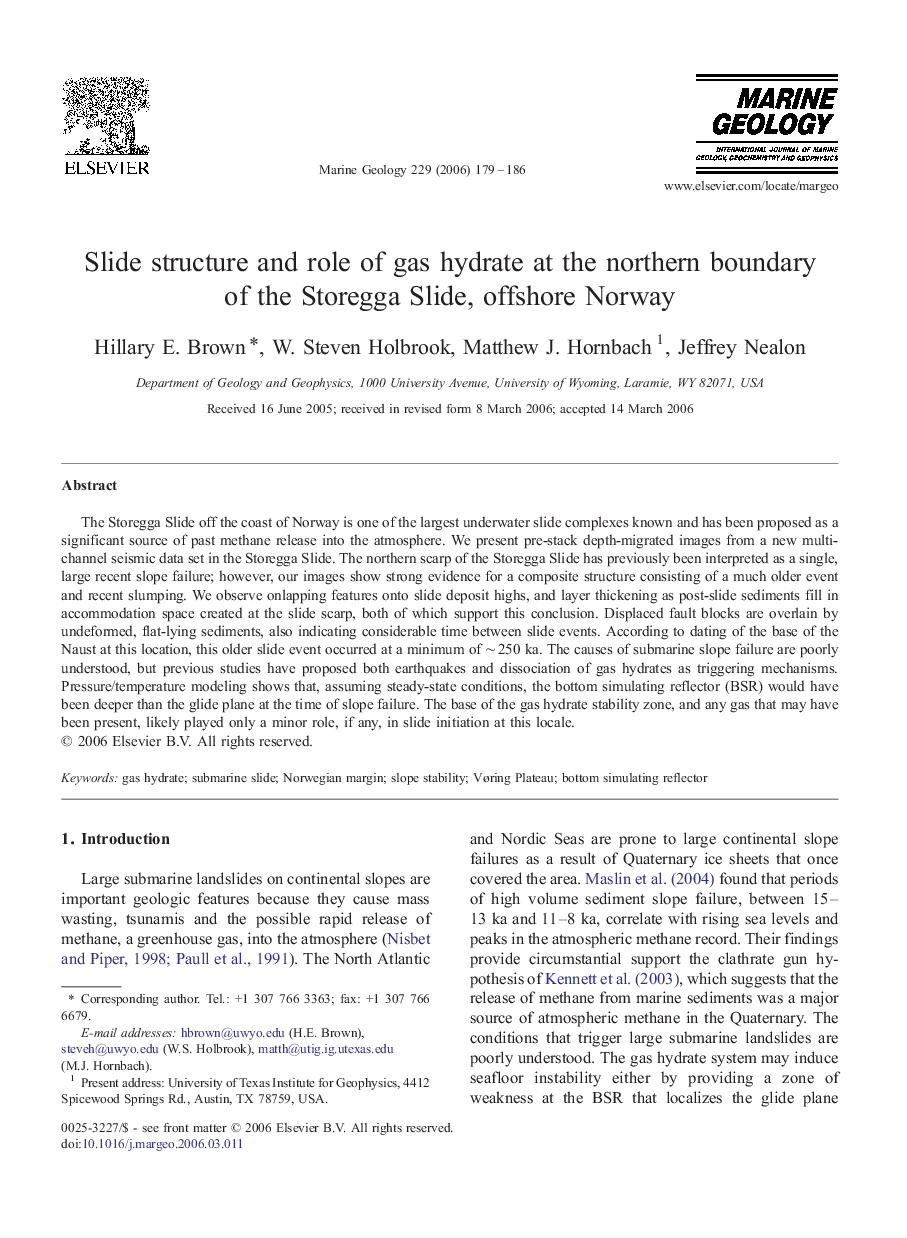| Article ID | Journal | Published Year | Pages | File Type |
|---|---|---|---|---|
| 4719829 | Marine Geology | 2006 | 8 Pages |
The Storegga Slide off the coast of Norway is one of the largest underwater slide complexes known and has been proposed as a significant source of past methane release into the atmosphere. We present pre-stack depth-migrated images from a new multi-channel seismic data set in the Storegga Slide. The northern scarp of the Storegga Slide has previously been interpreted as a single, large recent slope failure; however, our images show strong evidence for a composite structure consisting of a much older event and recent slumping. We observe onlapping features onto slide deposit highs, and layer thickening as post-slide sediments fill in accommodation space created at the slide scarp, both of which support this conclusion. Displaced fault blocks are overlain by undeformed, flat-lying sediments, also indicating considerable time between slide events. According to dating of the base of the Naust at this location, this older slide event occurred at a minimum of ∼ 250 ka. The causes of submarine slope failure are poorly understood, but previous studies have proposed both earthquakes and dissociation of gas hydrates as triggering mechanisms. Pressure/temperature modeling shows that, assuming steady-state conditions, the bottom simulating reflector (BSR) would have been deeper than the glide plane at the time of slope failure. The base of the gas hydrate stability zone, and any gas that may have been present, likely played only a minor role, if any, in slide initiation at this locale.
